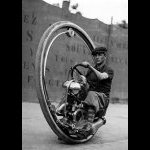Search the Community
Showing results for tags 'cabinets'.
-
Hi. Pretty new to Helix (floor v. 3.6) and Fender Active Precision Deluxe Bass. Playing through Helix with Pre-amp, Amp, cabinet, EQ, compressor etc. block chain settings. Wondering about best mics to use, placement, cabinets, etc.. I used to run live sound so I am familiar with what works analog. I would normally use a DI (output or box) or a bass drum or floor tom-tom mic on a mic stand or, maybe, a flat-sided "guitar" mic laying against the speaker grill. I can't really tell much of anything from the names/types, etc. and don't just want to try them all without a clue. Also, I don't get what position (7.5) is (vs. angle and distance), why distance is 9" (default for 47 Cond FET (Condenser Field Effect Transformer?)). (Starting with "Bass" amps / cabs.) Any / all help is greatly appreciated. Thanks!
-
The IR's I have posted on this forum and on Dropbox are made from the Amplitube 4, Fruity Loops, and Voxengo Deconvolver, along with my own tweaks to taste. I asked around this forum and the IK Multimedia forum, Sonar forum, and more and no one had experience or direction. After a lot of research and trial and (lots of) error on my own, I finally got some working pieces in place. The simplest way to do it that I found was with Voxengo Deconvolver and Fruity Loops Fruity Convolver (FLC herein). I'm sure there are other more pro ways to do it. http://www.ikmultimedia.com/products/amplitube4/ (I highly recommend the Amplitube 4 + Mesa pack for $159) http://www.voxengo.com/product/deconvolver/ http://www.image-line.com/downloads/flstudiodownload.html You can completely create and save IR *.wav files that will import into Helix with the demo versions of FL and Voxengo. But you wont be able to save and reopen the FL session, and you cant do more than 3 conversions at a time with the Voxengo demo. Follow the Fruity Convolver "plug-in sandwich" method for creating an plug-in IR in Making impulse responses from plugin effects , which is based on a reverb plug-in. Except use a 20 sec (20Hz-20kHz) sine sweep signal exported from Voxengo in FLC slot 1 instead of the FLC "clap" impulse (which is good for reverbs). I found that although Helix converts IR's to 16 bit, the 24 bit Voxengo IR sine sweep made a better sounding Cab IR. I couldn't tell a difference between 24 bit and 32 bit. Also, I couldn't tell a difference between Mono and Stereo sine sweep through a cab. https://www.image-line.com/support/FLHelp/html/plugins/Fruity%20Convolver.htm Here's a video too. I attached a few screenshots with some notes. I might make a video if you guys want it. Again, the IR's I made were raw, but I thought they sounded good enough for me. A little EQ matching with a plug-in and a track could refine them a bit more. Someone with more time and software tools might do a bit better than I did. Here is a Dropbox link to my working Amplitube IR's https://www.dropbox....Rd2evJJ0Ca?dl=0 FYI, I have a feature request into IK Multimedia to allow IR export directly from Amplitube for live use. We'll see if that goes anywhere. I'm sure they could sell more Amplitube with something like that. They don't have anything like Line 6 IdeaScale that I could find. This should work with other software modellers too, but I only have Amplitube. I can see this also making a good scratch pad for testing virtual cab and mic configurations before setting up physical cabs and mics for real IR's. Posted Line 6 Helix IR Utility to Idea Scale. http://line6.ideasca...ty/813669-23508 Update 4/6/2016: Clarifying summary steps from another post response. Use Voxengo Deconvolver (VDC) to generate the 20 sec sine sweep impulse *.wav file for an input signal to the DAW plug in (Amplitube) In Fruity Loops, make the Fruity Loops Convolver (FLC)-Amplitube-Fruity Loops Convolver plug in sandwich Turn of the 1st and 3rd slot FLC's and tweak an Amplitube Cab and Mic to taste to a Helix amp Turn on the 1st FLC slot and import and play the Voxengo sine sweep through Amplitube and adjust the Amplitube inputs and outputs below clip (red). Turn on the 3rd FLC slot (all 3 are on now) and record the output (response) of the 1st FLC through Amplitube 2nd slot. In the 3rd FLC slot, add a little silence to the end of the recorded response as for some reason it is slightly shorter than 20 sec. In the 3rd FLC slot, export the response as a *.wav In VDC, load the original VDC-generated 20 sec sine sweep *.wav file and the FLC exported response *.wav file, In VDC, set the magic settings in the pic above (experiment to taste), and click Process In Helix App, drag your new IR it into one of the Impulses slot, put it on a preset, and enjoy. To maybe alleviate any concerns about pirating Amplitube, all new IRs I post will be exported from Helix impulse library after they have been processed by Helix import. This adds another layer of processing that makes them a little further from the Amplitube originals, but the same to Helix users. Recall that Helix converts IRs to 16 bit on import. I also think there may be some other processing by Helix as the 9kb 16bit Helix-exported IRs sound different in a DAW than the pre-import 24 bit 50-150kb IRs I get with the process I use. Update 4/7/2016 I have added equivalent Power Amp + Cab IR's on Dropbox. These have a lot thicker sound and I believe have captured more of the tube power amp + cab interaction and vibe. These can be use with Helix preamp blocks as well as amp blocks. Using them with preamp blocks will allow you to split the signal after the preamp for virtual effects loop or to send preamp signal to your real tube power amp or amp effects return, the run the Amp +Cab IR to the Helix XLR for front of house sound. Mesa Recto Pwr Amp +Cab Marshall 70 80 Pwr Amp + Cab Fender Twin 212 Pwr Amp + Cab Fender Deluxe 410 Pwr Amp + Cab Mesa Mark III V30 412 Pwr Amp + Cab New! These IR's should give you completely different sounds than available from within Helix or from any cab IR company (Ownhamer or Redwirez). Update 4/8/2016 I have archived all previous trial IR's and files and did some housekeeping. The old stuff should still be there in the !Archive folder if there is something you think you need. All files are now at the IR folder level with a naming convention to organize them. There is generally one cab IR and one (power) Amp + Cab for each amp/cab type. I have refreshed previous cab IR's and new amp + cab IR's with updated naming so that the name in Helix is the same as the file name. It was a file title issue. New tested workflows below!!! These IR's work great with outboard physical gear and Helix as the IR processor, signal router, and controller, including preamps, amps effects sends, and amps though reactive loads. Feel free to experiment as always, but the the physical components do seem to work intuitively as you would traditionally route them in the real world. preamps sound good through Amp + Cab IR's and the amp effects sends, slaves, & reactive load outs sound good through the Cab IR's Things I have tested that work well: Helix preamps & amps (of course!) Mesa Triaxis preamp Marshall JMP-1 preamp Mesa V Twin pedal preamp Mesa Stiletto Duece II (effects send & reactive load) Mesa Mark V (effects send, slave out, & reactive load)
-
Has anyone bought or tried the PowerTrain Stage 50 (from ValveTrain)? http://www.valvetrainamps.com/all-tube-powered-monitors/powertrain-stage-50/
-
Going into regular amp using helix amp or preamp WITHOUT cabinet or IRs Experimenting because I feel like there's already a real speaker in this scenario and an emulated one can make it sound muddied or 2nd generation. The sound feels more present just using real speaker, not modeled. I do like some of the qualities that come with the cabinet, eliminating some harshness produced by an amp on its own. Appreciate any musings on EQ or FX that would be nice after the Helix amp and before the real amp. I've been playing with eq and compressors I'm going into a Roland KC-550 and KC-500 stereo, and a Egnater Tweaker through a Carvin 212. Straight in on the Rolands. On the Tweaker still playing with input vs effects return. ~cheers
-
I've recently bought Spider V20. Everything works fine except switching cabinets in line 6 spider remote PC app. While switching cabinets the sound remains the same. It happens while I'm playing through Amp speaker and also via headphones. My V20 is running the 2.0 version software and remote PC app 1.03. Did anyone have similar problem? Any ideas? Thanks!
-
- spider v20
- v20
-
(and 3 more)
Tagged with:
-
Hi. Is there a list of default cabs per simulated amp? I am working on an extended overview of the HD Model Packs List. If this information is not available I would go through the amps on the HD and write it down.
-
I have two marshall 4x12 cabinets would like to run them in stereo to Vetta II head, hooking up the mono 16 ohm side of each of the cabinets. Can someone tell me if the Vetta II speaker outputs are in parallel? Do I set the ouput switch to 8 ohms if running two 16 ohm cabinets etc etc like a normal amp speaker ouputs are? thanks
-
Can I use more than one virtual cabinet at a time with amplify? I'd like to "use" an 8X12 Marshall stack instead of 4X12.
-
It's been a LONG time since I saw any speak on the topic - unless I've just gotten lazy, meh. Are Line 6 guitarists giving up on the hope they'll resume a 2x12 extension cabinet? Is it a pipe dream for me? I'm military here, almost ready to retire, but past 2x12's have been the perfect size for sneaking around on deployments and such (no - they're not allotted for travel, ha! they're kinda up there with my Suave Shampoo bottle filled with Jager, hehe. It pays to be cool with the Load-Masters). Suffice it to say - I have left a couple/few behind in the sand-box...back home now (finally), ready to hang it up, HOPING there'd be some talk about a Line 6 2X12 "we've [Line 6] come to our senses..." discussion on the matter. Of course - there hasn't been...kinda sad over here :)
-
- speakers
- extension cabs
-
(and 1 more)
Tagged with:



